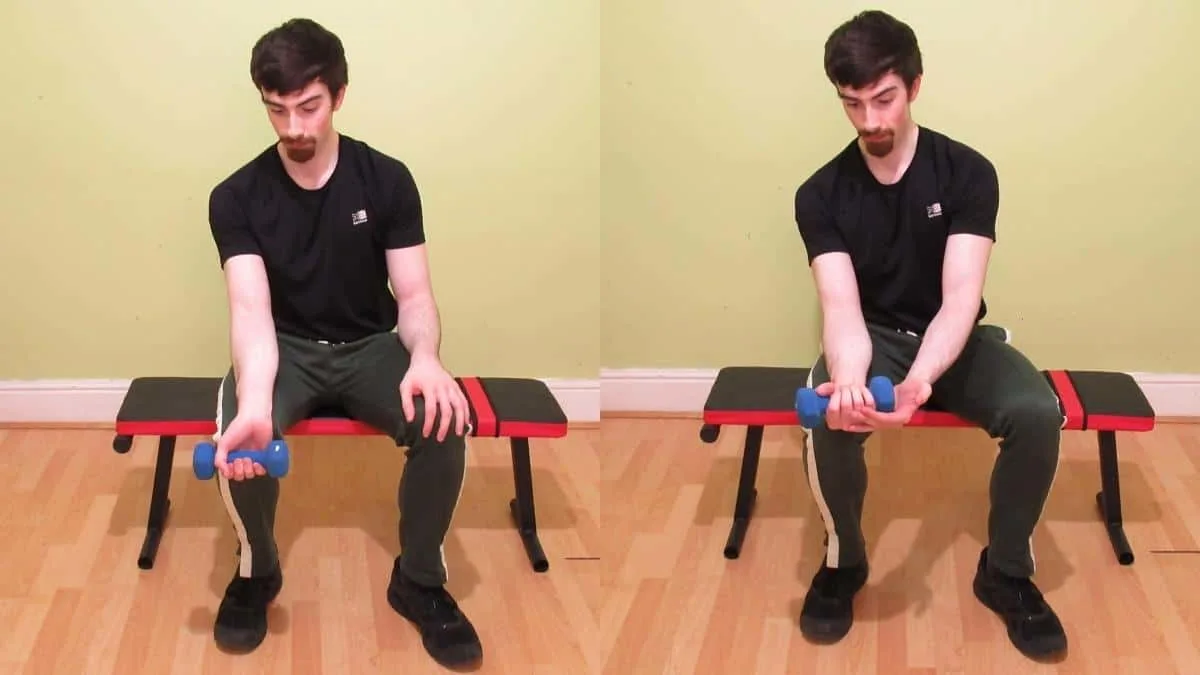The muscles of the forearm can quickly become weak through inactivity, whether that’s of one’s own volition or through injury. Now, obviously, weak muscles of any kind, however ordinary they might be, aren’t a particularly good thing.
But since the forearms are so active during everyday tasks, it’s especially vital to keep our lower arms strong and healthy. Starting with eccentric forearm exercises is a good idea because it gets the muscles used to resisting tension without overstraining them.
Related strengthening workouts
Top 3 eccentric forearm exercises
These eccentric forearm exercises train the 3 main areas of the lower arm; the forearm flexors, the forearm extensors, and the brachioradialis.
1. Eccentric wrist flexion
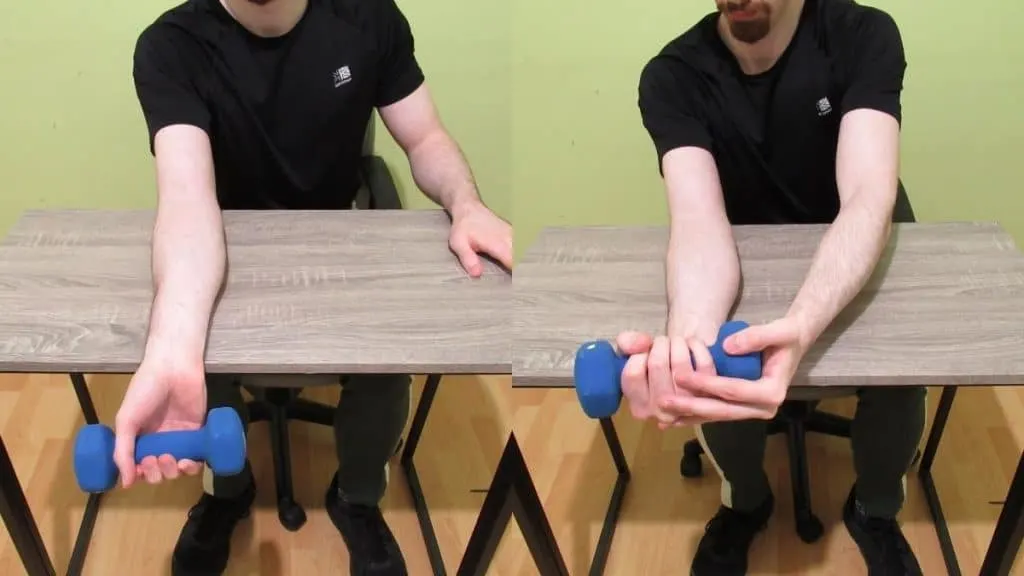
This drill—the wrist flexion with a dumbbell—is great because you can do it virtually anywhere. All you need is a light dumbbell and a few spare minutes. Sound good?
- Hold a light dumbbell in one hand and then rest the top of your forearm on a flat surface like a desk or table.
- Let your hand and wrist hang off the edge.
- Lower the weight down slowly by bending your wrist until you feel a nice forearm stretch.
- Use your other arm to help curl the weight back up.
- Repeat for 2-3 sets of 10-15 reps and make sure to control the dumbbell at all times (don’t just let it fall on the way down).
2. Eccentric wrist extension
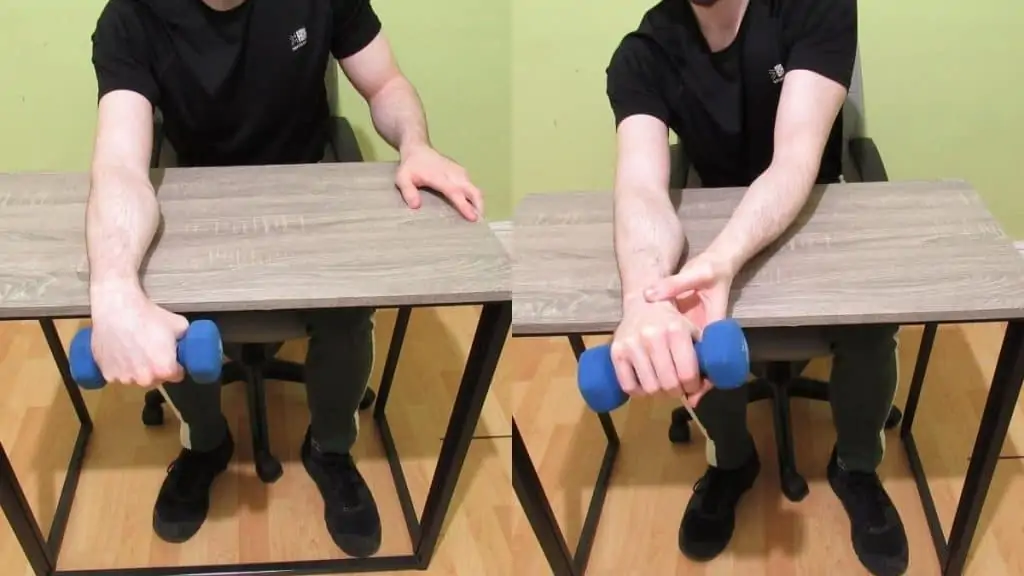
The flexors of the forearm, which we just trained with the above exercise, get worked well during virtually every back and bicep exercise. However, the extensors—which are no less important—often get put on the back burner.
Therefore, it’s pivotal to do a wrist extension with a dumbbell in addition to our flexion drill.
- Grab a light dumbbell and place the underside of your forearm on a flat surface.
- Allow your hand to hang off the edge.
- Lower the weight until you feel a stretch in the top of your forearm.
- Use your other arm to bring the weight back up.
- Repeat for 2-3 sets of 12-15 reps and don’t forget to work your other arm!
3. Eccentric reverse curl

This exercise is a little bit more complicated to execute because there is a concentric component to it. However, it’s the closest thing that you’re going to get to an eccentric exercise for the brachioradialis (a very important forearm muscle that often becomes tight).
- Hold a moderately light dumbbell in one hand with an overhand grip.
- With the help of your other hand, curl it up until your working arm goes beyond a 90-degree angle.
- Lower the weight slowly and under control with just your working arm.
- Switch sides and then repeat for 2-4 sets of 8-12 reps.
What’s the benefit of doing eccentric forearm exercises?
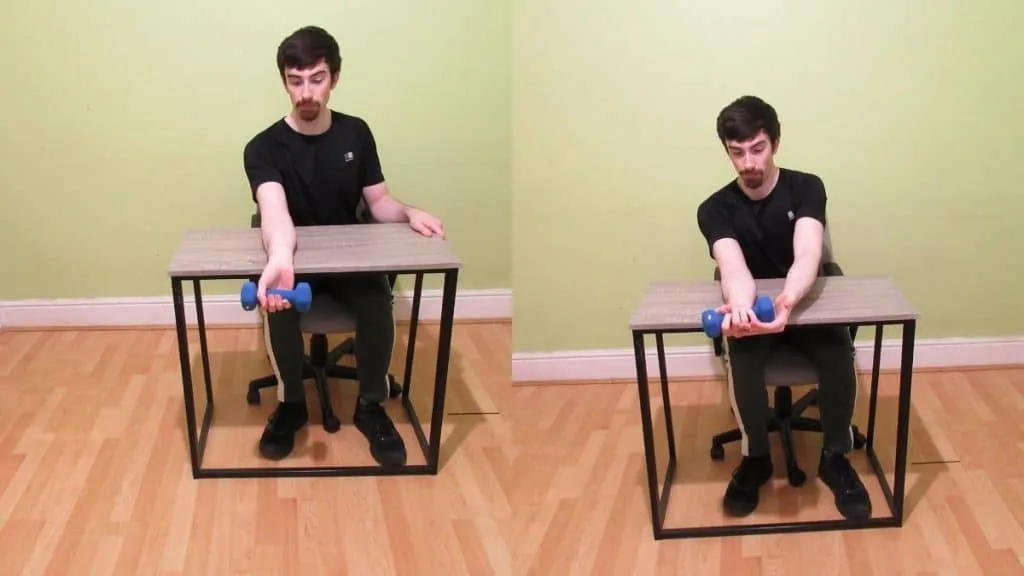
If you’re rehabbing after an injury or just don’t want to overexert yourself too soon, then eccentric forearm exercises can help you build strength without overstressing the muscles or your nervous system.
This is because the concentric (lifting phase) part of a rep is more challenging. It’s well documented that you can lift significantly more weight on an eccentric only exercise than on a concentric-eccentric movement.
When can you progress from eccentric forearm exercises?

The logical progression is to start doing the full repetition, which is to say, a lifting phase as well as a lowering phase. This will help you to build strength and muscle mass quicker. But this type of training is also harder to recover from, so don’t rush into it too soon if you or your physical therapist doesn’t think that you’re ready.
Also, you can just increase the reps. Doing more reps per set naturally increases the training volume, which is the number one factor that determines how much muscle and strength you’ll gain.
Alternatively, slow down your reps. The benefits of eccentric forearm exercises really start to become apparent when you let your muscle fibers get broken down by the weights. This is straightforward to do when you lower the weight slowly and feel every bit of tension.
Conclusion
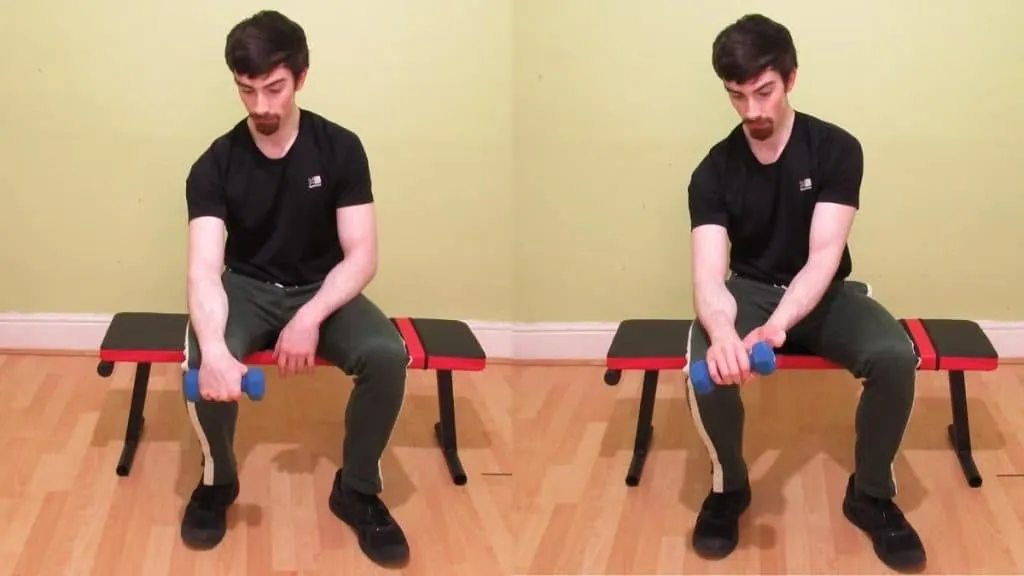
Ultimately, eccentric forearm exercises are great for building strength in one of the most crucial body parts: your lower arms.
My top tip is to always control weight and start light. Since you can lift more weight on eccentric forearm exercises, it can be tempting to load up—avoid this is possible.
It’s much better to build up true strength than to use poor form in order to accommodate more weight.
References
- Roig, M., O’Brien, K., Kirk, G., Murray, R., McKinnon, P., Shadgan, B., & Reid, W. D. (2008). The effects of eccentric versus concentric resistance training on muscle strength and mass in healthy adults: a systematic review with meta-analysis. British Journal of Sports Medicine, 43(8), 556–568. https://doi.org/10.1136/bjsm.2008.051417
- Hody, S., Croisier, J.-L., Bury, T., Rogister, B., & Leprince, P. (2019). Eccentric Muscle Contractions: Risks and Benefits. Frontiers in Physiology, 10. https://doi.org/10.3389/fphys.2019.00536

